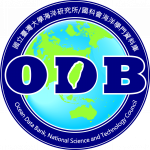Database
We compiles biological and microplastic data in the waters surrounding Taiwan. For the diverse sources and varying content, we have established a standardized data curation process and provided different data acquisition approaches for each data type. If you are interested in our data and related informatics services, please read the following introduction and feel free to contact us with any questions.
Biological Data
▶Data Type
Due to the completeness of the raw data and the data release policies of NSTC, our data is categorized into two types - occurrence and abundance data. These types offer different data fields, and you can query/access each type through the corresponding channels; also, the survey topics and data sources they cover are slightly different, as shown below:
- Occurrence: Include information on sampling time, geographic coordinates, taxon, and data source.
- Abundance: Include information on sampling time, geographic coordinates, taxon, sampling protocol, abundance, and data source.
| Data field | Data Topic | Data Source* | Interactive Map | Data Access | |
|---|---|---|---|---|---|
| Occurrence | samping date geographic coordinates taxon data Source |
zooplankton larval fish demersal fish benthos benthic foraminifera fish eDNA mammals eDNA |
Projects of the National Science and Technology Council Data provided by researchers Published papers and dissertations International open database Collaboration projects with OCA |
Hidy Viewer | Eco API |
| Abundance | sampling date geographic coordinates sampling protocol taxon abundance data source |
zooplankton larval fish demersal fish benthos |
Projects of the National Science and Technology Council Data provided by researchers Published papers and dissertations International open database |
Hidy Viewer** | Data Application |
*The complete data source description can be found in the following section Data Source.
**Switch on the button "Data available for application only".
▶Data Source
Unlike many ocean exploration technologies using instruments or probes that can directly get quantitative data, biological trawling samples must be brought back to the laboratory and identified/quantified by professional researchers. These taxonomic abundance data are thus scattered in each research laboratory, and we collect such data from the following sources:
- Projects of the National Science and Technology Council: Survey data from the projects funded by the National Science and Technology Council.
- Published papers and dissertations: ODB technicians compiled open data of journal papers or doctoral and master dissertations in related fields.
- Data provided by researchers: Researchers proactively contribute their research data to ODB.
- International open database: International zooplankton database COPEPOD.
- Collaboration projects: Survey data from projects collaborated with OCA (project reports for 2021 and 2022).
▶Data Curation
The Darwin Core Standard (hereafter DwC) is adopted in the Bio-Ocean Database to integrate the diverse formats of the raw data that come from different research teams. The DwC standardizes the field names and corresponding data content commonly used in biodiversity data, making it compatible with a variety of biological survey data. Before import into the database, all information undergoes the following data cleaning and quality control processes:
- Spatial and temporal attributes check: If the data were collected by the R/V - ORⅠ, ORⅡ, ORⅢ, NORⅠ, NORⅡ, or NORⅢ, the cruise-related information would be verified with the cruise database and cruise reports of ODB.
- Scientific name check: The scientific name of the taxon would be verified with WoRMS to ensure that all imported records use unified and accepted scientific names.
- Sampling and experimental method: Information on sampling or experiment protocols would be recorded in the corresponding column according to DwC standard and try to keep its integrity.
- Standardization of numerical units: Numerical data, such as species abundance, mesh size, and trawl depth, are standardized by using the most commonly used units.
Microplastic Data
▶Data Source, Curation, and Access
In addition to biological data, we also collect marine microplastic data. Sources include the microplastic survey from the collaborative project with OCA, published papers and dissertations, and the international open database NCEI Marine Microplastics. We follow the standards of NCEI Marine Microplastics to categorize the microplastic concentrations into five levels. As for the database fields design, we opted for naming conventions close to those used in biological data fields, facilitating data retrieval in our informatics services. If you are interested in ODB microplastic data, you can find it through Hidy Viewer (in the section "Microplastics") and Eco API.
